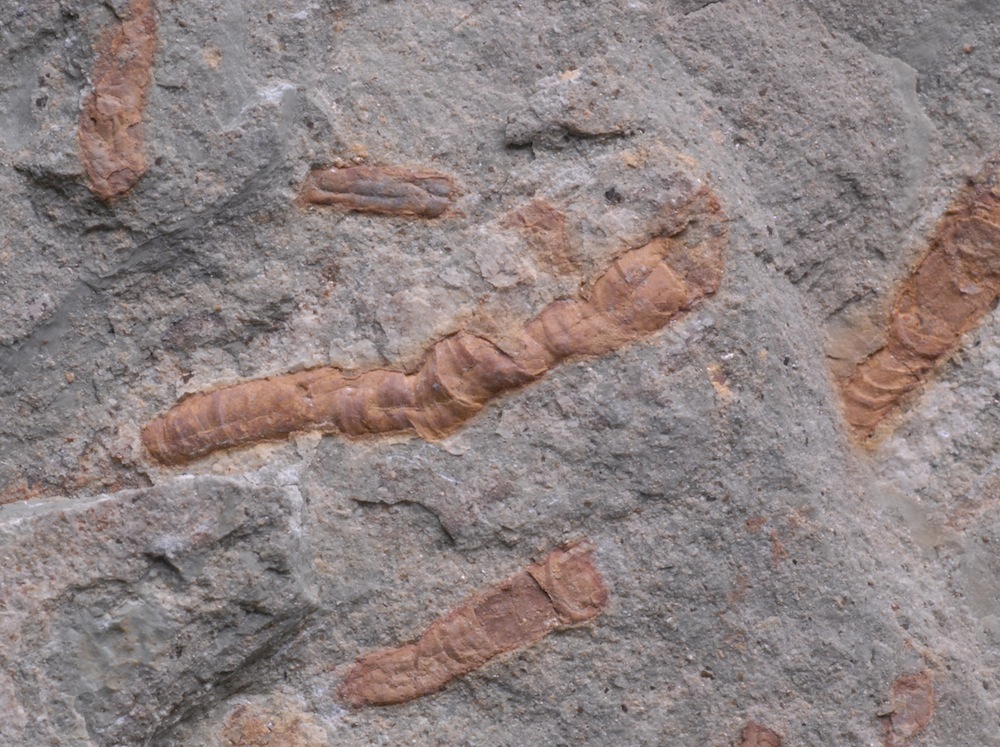When you buy through links on our site , we may realize an affiliate military commission . Here ’s how it bring .
Fool ’s gold helps explain why many fossils of soft - corporate animal that lived more than 540 million days ago still pull round , a unexampled sketch finds .
The bacterial breakdown of ancient , wormlike animals after their deaths led to the formation ofpyrite , the lustrous , xanthous mineral sometimes slip for amber . This pyrite helped preserve the fossil in three dimensions , according to research published Wednesday ( Dec. 17 ) in the diary Nature Communications .

Tubelike fossils of an animal known asConotubus hemiannulatus.
Understanding this unknown summons is of import , say subject field investigator James Schiffbauer , a paleobiologist at the University of Missouri , because the mental process of pyrite mineralization could produce features that , deceivingly , look like the original biology of the brute . [ Extreme Life on Earth : 8 Bizarre brute ]
" What we ’re sample to do is , look at the biological sign and deduct the geologic stochasticity , " Schiffbauer enunciate .
Tube animals

At the Gaojiashan fossil site inChina , the tubelike fossil of an animal cognize asConotubus hemiannulatusare common discoveries . The creature dates back to about 550 million to 542 million years ago .
" We actually do n’t have any fogey evidence of what that beast was , " Schiffbauer pronounce . " look at the vacuum tube , we can say it ’s likely wormlike or maybe ocean - sea anemone - like . "
In many ways , though , it ’s a miracle that even the fossil tube exist . Early fauna likeC. hemiannulatusdid not havemineralized boneslike dinosaur or other late fauna , whose fossilized skeletons let on much about the animals ' flesh . As such , the fossilization process of soft - tissue animals is poorly understood , Schiffbauer said .

He and his colleagues studiedC. hemiannulatusfossils , describe on the observation that many are surrounded by shiny pyrite . They measured the size of the pyrite crystals and also the isotopes ofsulfurin the pyrite , which is made of iron and sulfur . isotope are atom of an element that have varying phone number of neutrons in the nucleus .
These measuring reveal that the fool’s gold mineralization of the tubes start alfresco , where the crystals were smallest , and worked its way in . The isotopic fingerprints of the sulfur expose that bacteria were responsible for , at least at first .
bacterium and fossilization

From the alchemy , the researchers pieced together the process as well as they could . It work like this : First , the animate being were rapidly immerse , plausibly by a large event like a storm that brought a mass of sediment to their seafloor environment . This sudden sepulture prevented atomic number 8 - loving aerobicbacteriafrom moulder the soundbox too apace to allow for fossilization .
Below the aerofoil , though , endure S - breathe bacteria that found the soft organisms to be an appealing fiesta . fuel by the atomic number 6 in the wormy animals , these bacterium converted sulfate from the seawater into hydrosulfide . That hydrosulfide react with devoid iron in the piddle , which kick - started the formation of pyrite at the edges of the underground . This mental process probably pass off chop-chop , perhaps within 12 to 800 years , the investigator describe .
Most in all likelihood , Schiffbauer say , the pyritization outgrowth continue without the assistance of bacterium as the fossils were eat up further .

The explanation helps to empty the mystery of why about 80 per centum of the fossils in the Gaojiashan organization are preserved in three dimensions , with gull ’s amber around them , while others are preserved in two dimensions in a second process called carbonic compression . It seems that , as long as sediments did n’t continue to sink the fossils too quickly , the iron pyrite operation could continue . If the fossil buried faster , the compression appendage take over , creatingpancake - flat fossilsinstead of fossils in three attribute .














